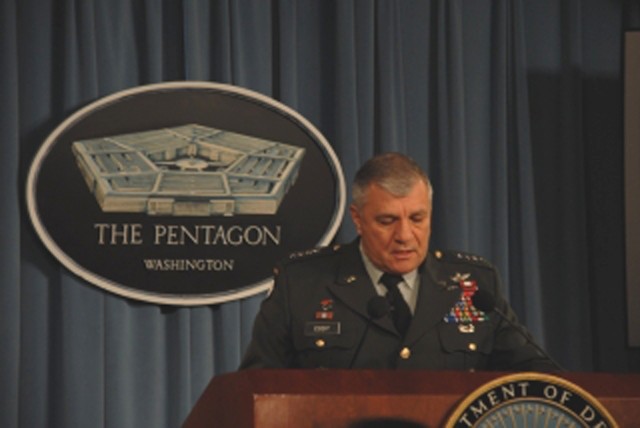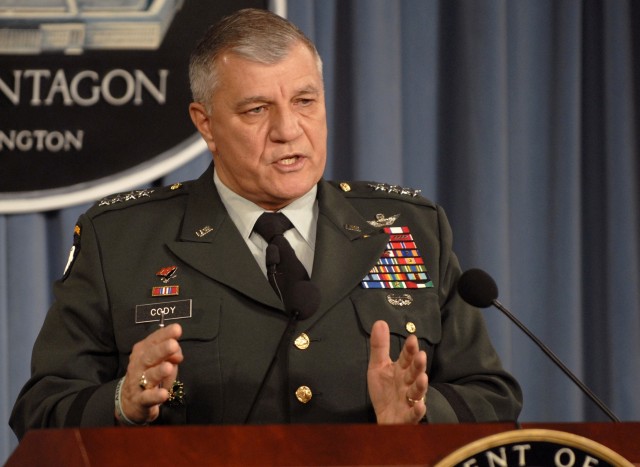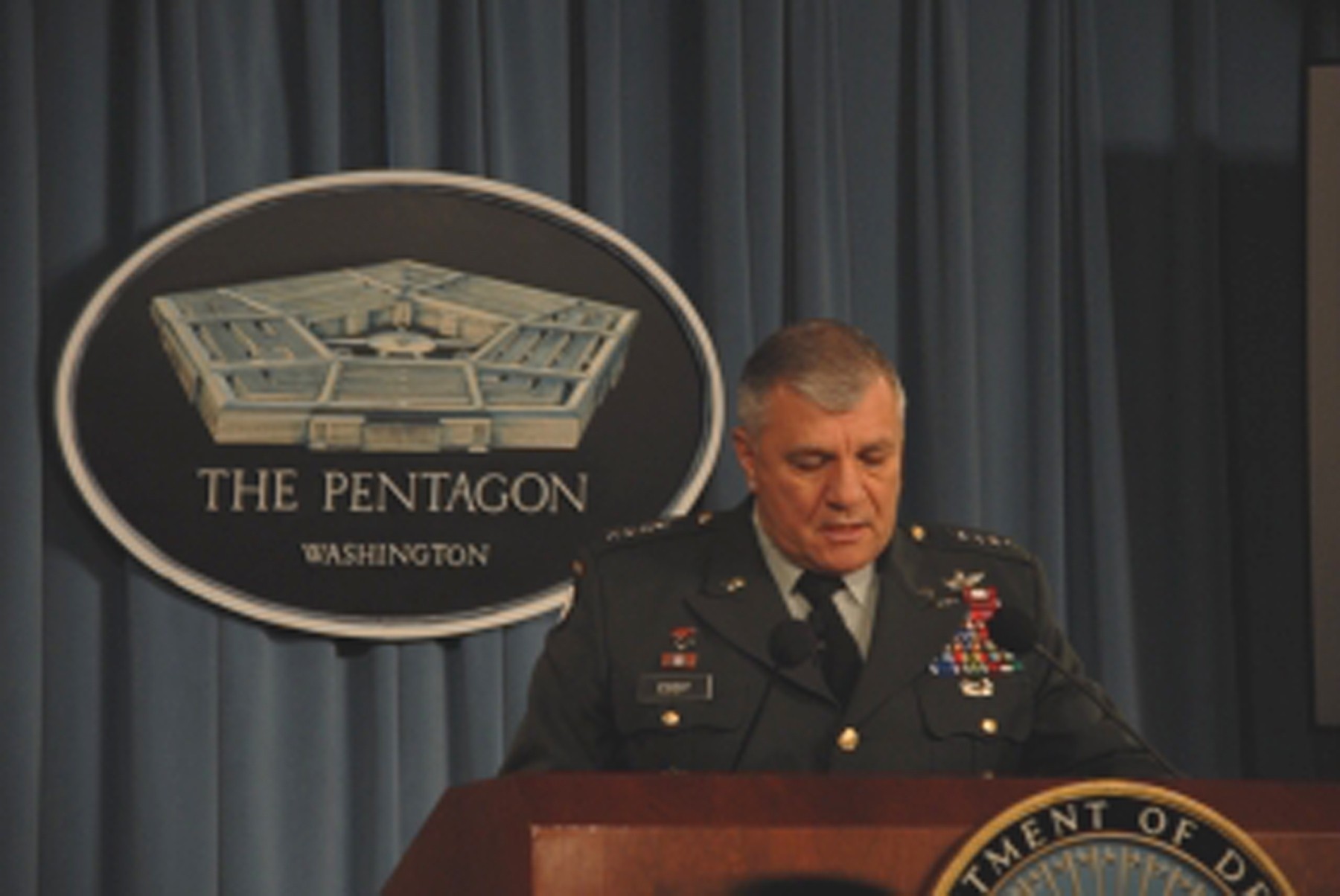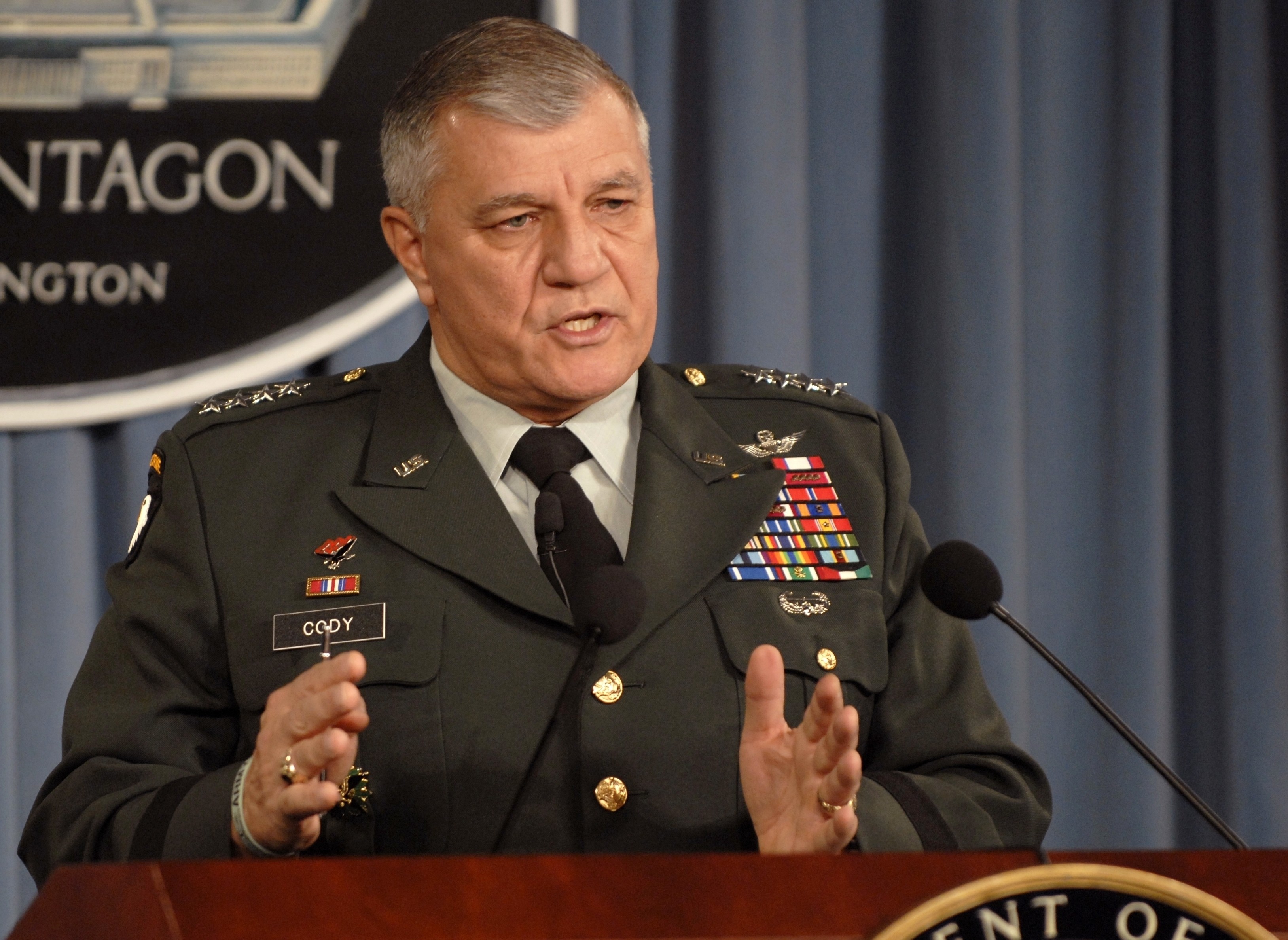WASHINGTON (Army News Service, Dec. 19, 2007) - Secretary of the Army Pete Geren and Army Vice Chief of Staff Gen. Richard Cody today announced plans to activate three new units in 2008, and other unit-stationing decisions to support the Army's growth by up to 74,200 Soldiers, including 65,000 active-duty Soldiers, by 2010.
The stationing plans announced during a Pentagon press conference this afternoon include six infantry brigade combat teams, eight active-component support brigades and various-sized combat-support and combat-service-support units.
"The Army is undergoing the largest transformational change since 1942," said Gen. Cody. "We've changed our doctrine. We've changed our organizational structure to the Army modular force. We've changed the active component and the reserve component, balancing between formations.
"We've changed modernization and reset programs, and at the same time, under BRAC 2005, we're changing the footprint of our Army to make it more agile, more expeditionary, but also to place our formations and our Family members in camps and stations that have a higher quality of life, a higher quality of training ranges so that we have the right formations so that we are training as we would fight."
The stationing plan builds upon the 2005 Base Realignment and Closure Act, Gen. Cody said, and ensures growth capacity for not only the 74,200 Soldiers, but any future growth the Army might need. It considers power projection, so that rail, air and port systems will be able to move troops when needed.
The plan also accounts for training areas at each post, camp and station, from small-arms training to large maneuver-training areas. Most importantly, he said, the Army considered the quality of life for Soldiers and their Families, and is creating real communities at installations.
BRAC relocates the 1st Armored Division from Germany to Fort Bliss, Texas; and the 1st Infantry Div. to Fort Riley, Kan., and Fort Knox, Ky., by September 2011. Per the request of the European Command commander, the Army will activate two heavy brigade combat teams in Germany in 2008 and 2010 to support near-term theater security needs, and reduce stress on Soldiers and Families by allowing time for construction in the United States to support transformation, BRAC realignments and Army growth.
The Army is scheduled to increase its strength to 48 infantry brigade combat teams by fiscal year 2011 by retaining, activating and converting three existing BCTs and growing three new BCTs at Fort Carson, Colo., Fort Bliss, and Fort Stewart, Ga. The two brigade combat teams stationed in Germany are tentatively scheduled to relocate to Fort Bliss in fiscal year 2012 and White Sands Missile Range, N.M., in fiscal year 2013, respectively.
The Army also plans to activate eight active-component support brigades and restation two others.
o Fort Hood, Texas, will activate an air-defense-artillery brigade headquarters and an expeditionary-sustainment command headquarters.
o Fort Lewis, Wash., will activate a sustainment brigade
o Fort Polk, La., will activate a battlefield-surveillance brigade.
o Fort Bliss will activate a fires brigade.
o Schofield Barracks, Hawaii will retain a military police brigade and activate an engineer-brigade headquarters.
o Fort Leonard Wood, Mo., will activate a maneuver-enhancement brigade.
o A second will be restationed to Fort Drum, N.Y.
o A third will be restationed to Fort Richardson, Alaska, pending the completion of a supplemental-environmental analysis.
The Army is also stationing about 30,000 Soldiers in combat-support and combat-service-support units throughout the U.S. and overseas. The details are in a report directed by the FY 2007 Emergency Supplemental Appropriations Act, which requires the secretary of Defense to submit a stationing plan to support Army growth.
Gen. Cody said between fiscal years 2006 and 2013, the Army expects to spend approximately $66 billion on more than 743 construction projects to support its growth. This includes 66 new child-development centers; 69,000 new barracks, which does not include renovations to old barracks; 4,100 Army Family houses, which does not include houses built under the Residential Communities Initiative; and 23 brigade-combat-team complexes.
Gen. Cody said the ease and convenience of the complexes make him want to be a captain again. Barracks, leadership offices, operations facilities, motor pool, and equipment storage areas are all close together, grouped around battalion and brigade offices and dining facilities.
The Army conducted a Programmatic Environmental Impact Statement to consider any environmental impacts stationing new units would have on installations, to examine available alternatives and to solicit the views of the public. The analysis and stakeholder comments were part of the decision-making process for selecting the final stationing for new units, officials said.




Social Sharing